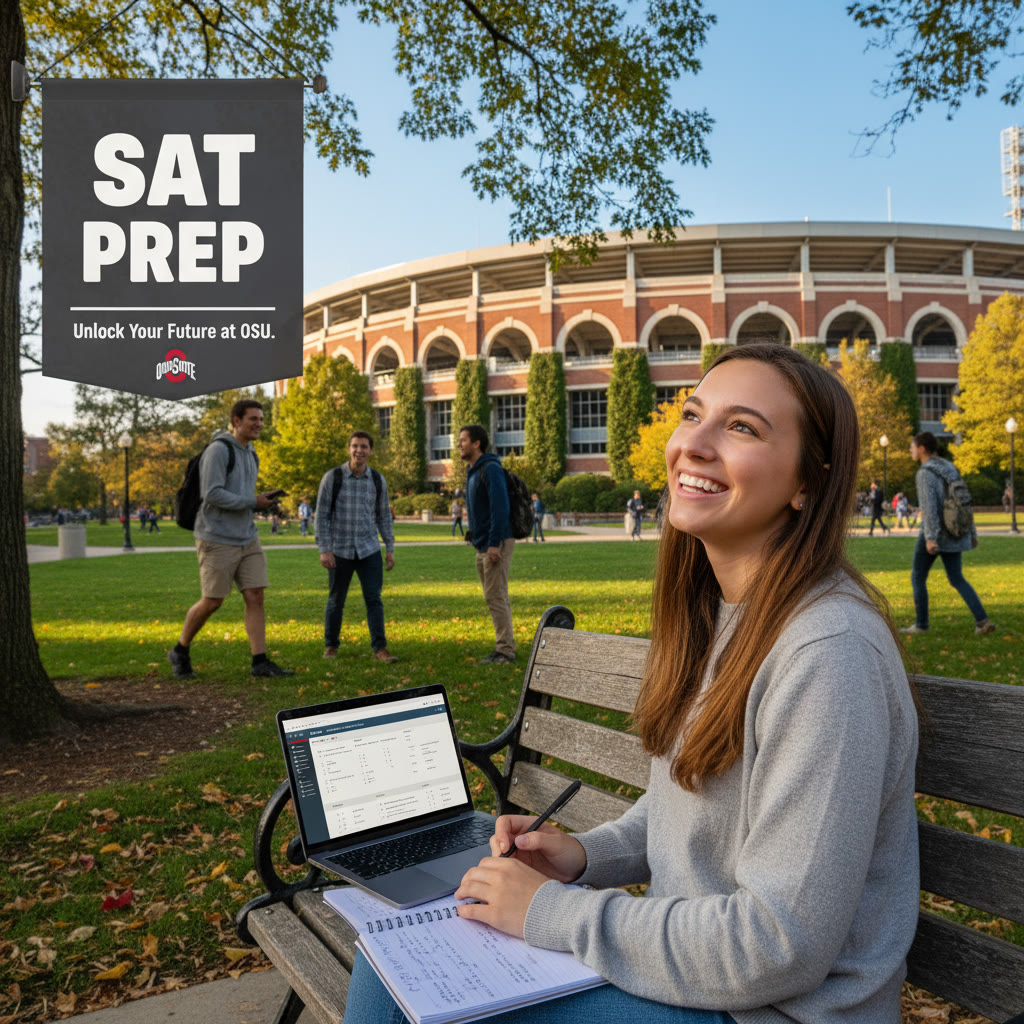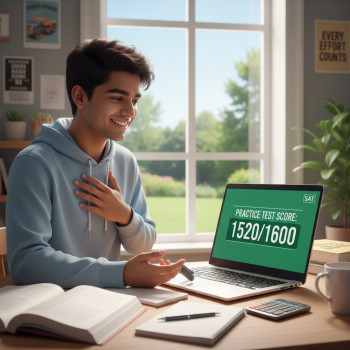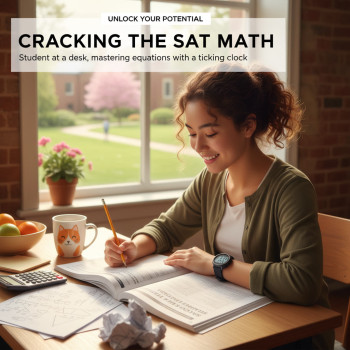Does Ohio State University require the SAT?
Short answer: it depends. Over the last few years, many universities — including large public institutions like The Ohio State University — have adjusted their testing policies in response to changing admissions philosophies, student access concerns, and the introduction of the Digital SAT. What that means for you: whether you have to submit SAT scores, whether scores will be optional, and how admissions officers use scores can change from year to year. The safest move is to check Ohio State’s official admissions page for the cycle you’re applying to and plan accordingly. In the meantime, this guide breaks down what to expect, how to interpret score ranges, and how to build a stronger application whether you submit scores or not.

How admissions officers typically treat SAT scores at large public universities
At big public research universities, the SAT is usually one component among many: high school transcript and GPA, curriculum rigor, essays, recommendation letters (if required), extracurriculars, and sometimes state residency or program-specific criteria. If a school is test-optional, that does not mean test-blind — admissions staff will often review scores that students choose to submit, and strong scores can strengthen an application or improve scholarship eligibility. Conversely, if you have a weaker test score and your school is test-optional, you can often emphasize grades, course rigor, and other achievements instead.
Why you should still consider taking the Digital SAT
- Scholarships: Many merit scholarships still use standardized test scores as part of their selection. A strong Digital SAT can unlock financial aid opportunities.
- Program admissions: Certain colleges, honors programs, or majors within a university may weigh scores more heavily.
- Self-positioning: A high score can reinforce the academic parts of your application, especially if your high school GPA or course availability doesn’t fully reflect your potential.
Understanding score ranges and context for Ohio State
Colleges often publish a middle 50% range for admitted students. That range tells you where the bulk of admitted applicants’ scores lie — and can help you set a realistic target. Because exact policies and published ranges can change between admissions cycles, use published ranges as a guide, not an absolute threshold. Here’s how to interpret them:
- Below the 25th percentile: Your application will need other strong elements to stand out.
- Between the 25th and 75th percentiles: You’re in the main pool — focus on polishing essays and supporting materials.
- Above the 75th percentile: You’re competitive; maintain strong coursework and showcase meaningful activities.
Sample target-setting table
Use this sample table to translate SAT performance into an admissions strategy. These numbers are illustrative — set your precise goal after checking the most recent published range from Ohio State for your application year.
| Applicant Profile | Digital SAT Goal | Primary Focus Beyond Test |
|---|---|---|
| Top-tier applicant (competitive GPA & rigorous courses) | Top 10–25% of OSU admitted range | Maintain course rigor; craft leadership story in activities |
| Strong GPA, moderate test scores | Within OSU middle 50% | Stand-out essay; strong recommendation; extracurricular depth |
| Average GPA, high SAT | Above OSU 75th percentile | Highlight upward trends; emphasize test-supported strengths |
| Test-optional candidate (low SAT) | May choose not to submit | Compelling coursework, awards, essays, portfolio or audition (if applicable) |
Digital SAT: what’s different and why it matters
The Digital SAT changed the format, timing, and user experience of the exam. Important differences include shorter testing time, adaptive sections that tailor difficulty to your performance, and an on-screen testing environment. For many students, the Digital SAT’s format can be less exhausting and more aligned with modern test-taker skills. But it also changes preparation strategy: adaptive sections reward consistent performance across sections and penalize careless errors in a different way than the old format did.
Practical tips for the Digital SAT
- Practice on a device similar to the one you’ll use on test day so you’re comfortable with navigation and the on-screen tools.
- Work on pacing: the adaptive nature means a rough start can shift difficulty and score trajectory.
- Strengthen data interpretation and problem solving — these appear frequently on the Digital SAT.
- Use official practice modules to become familiar with question types and scoring behavior.
How to decide whether to submit SAT scores to Ohio State
Not every applicant has to make the same choice. Consider these questions when deciding whether to submit your scores to Ohio State:
- Does your score fall into the middle or upper part of Ohio State’s published range? If yes, submitting may help.
- Will submitting scores improve scholarship chances or program eligibility?
- Are there parts of your application that strongly compensate for a lower score (e.g., elite-level creative work, research, or athletics)?
- Is your high school GPA and course rigor strong and consistent? If so, OSU may weigh that heavily.
Scenario-based advice
- High score, strong GPA: Submit scores. They reinforce academic readiness and scholarship potential.
- Low score, stellar extracurriculars: Consider omitting scores if OSU’s policy is test-optional — but be prepared to show strengths elsewhere.
- Average score, average GPA: Use score to supplement — but also boost application through essays and recommendation letters.
How to build a preparation timeline (12–16 weeks example)
Consistency beats cramming. A focused 12–16 week plan gives you time to learn content, practice strategy, and simulate test conditions. Here’s a weekly blueprint you can adapt.
- Weeks 1–2: Diagnostic test, identify weaknesses, set target score.
- Weeks 3–6: Skill building (math fundamentals, grammar, reading strategies). Daily 30–60 minute sessions.
- Weeks 7–10: Timed section practice, adaptive question practice, and analytic review of errors.
- Weeks 11–12: Full-length digital practice tests every 1–2 weeks, review pacing, test-day routines.
- Weeks 13–16 (if needed): Targeted work on stubborn weaknesses and light tapering before test day.
Where personalized tutoring fits in
If your timeline includes targeted improvements, a 1-on-1 tutor can accelerate progress. Personalized tutoring — for example, Sparkl’s approach — offers tailored study plans, expert tutors who diagnose mistakes and provide efficient strategies, and AI-driven insights to track improvement. For many families, that combination saves time and reduces stress by focusing practice where it actually moves the score needle.
Application strategy beyond test scores
Whether you submit SAT scores or not, Ohio State admissions officers look at the whole student. Strengthen your application by:
- Choosing challenging courses and showing upward grade trends where possible.
- Writing a clear, personal college essay that ties your experience to what OSU offers.
- Highlighting meaningful extracurriculars — depth often beats breadth.
- Explaining unique circumstances in the optional application sections if relevant (e.g., disruptions, family responsibilities).
Tips for parents
- Be a calm resource: help set realistic targets and keep balance between preparation and well-being.
- Encourage short, consistent study sessions rather than marathon cramming.
- Consider guided support: organized tutoring or academic coaching (e.g., personalized programs like Sparkl’s) can give structure without micromanaging the student.
What admissions staff at Ohio State often look for
Based on how large public universities generally evaluate applicants, admissions readers try to answer a few core questions about each applicant: Can this student handle the academic challenge? Will they contribute to campus life? Do they show resilience, curiosity, and growth? Scores answer the first question to an extent, but essays, coursework, and extracurriculars communicate the last two. Keep that three-part frame in mind while assembling your materials.
Sample checklist before hitting submit
- Confirm Ohio State’s test policy for your application year (required, optional, or test-blind).
- Decide whether submitting SAT scores strengthens your application or scholarship chances.
- Complete a realistic practice test to compare against published ranges and set a score goal.
- Gather strong recommendations (if required) and draft an authentic, specific personal statement.
- Have a trusted reviewer (teacher, counselor, or tutor) give feedback on application elements.
- Finalize materials a few days before the deadline to avoid last-minute issues.

Real-world examples to illustrate choices
Example 1: Maria is applying to an engineering program at OSU. Her GPA is strong, but her first Digital SAT scores are slightly below the program’s middle 50%. She uses a 12-week personalized plan (targeting problem-solving and pacing), retakes the exam and improves — then submits scores and a portfolio of math research. Result: a strengthened application and eligibility for a departmental scholarship.
Example 2: Jamal has an excellent GPA and a leadership-heavy extracurricular profile, but lower SAT scores. OSU is test-optional that year. Jamal focuses on essays and getting a teacher to highlight his growth and leadership. He opts not to submit SAT scores and gains admission by demonstrating strong non-test strengths.
Common FAQs
Q: If Ohio State is test-optional, will not submitting hurt me?
A: Not necessarily. If your academic record and other application elements are strong, you can present a compelling case without SAT scores. But if you have a competitive score that supports scholarship or program eligibility, submitting can be advantageous.
Q: How many times should I take the Digital SAT?
A: Take it enough times to reliably reach your target score without burning out. For many students, 2–3 attempts combined with focused study shows measurable improvement. Each retake should be part of a deliberate study cycle: diagnose, practice, retest.
Q: Should I use a test prep program or a private tutor?
A: Both paths work. Self-study with official practice materials and a disciplined plan can be highly effective. If you want faster improvement or personalized accountability, a private tutor or tailored program — for example, Sparkl’s 1-on-1 guidance with tailored study plans and AI-driven progress tracking — often accelerates results and reduces wasted effort.
Final checklist: practical next steps
- Visit Ohio State’s official admissions page right now to confirm the current SAT policy and published score ranges for your intended year of entry.
- Take an initial Digital SAT practice test to set a baseline and realistic goal.
- Create a 12–16 week study plan or enroll in a targeted tutoring program if you want guided progress.
- Work on application elements that complement or compensate for test results — strong essays, course rigor, and meaningful activities.
- Maintain balance: sleep, exercise, and mental rest improve test performance and application quality.
Parting thoughts
Applying to The Ohio State University is about putting your best, most authentic self forward. The Digital SAT is a tool — sometimes required, sometimes optional — that can help tell part of your academic story. Whether you submit scores or not, prioritize the parts of your application you can control: rigorous coursework, compelling essays, and meaningful contributions outside the classroom. If you decide to prepare intensively for the Digital SAT, consider targeted, personalized support to make every hour of prep count. For many students and families, guided programs like Sparkl’s provide the focused plans, expert tutors, and data-driven feedback needed to build confidence and get measurable improvement.
Take the process one step at a time. Check the current OSU policy for your application year, make a realistic plan, and then chip away at it daily. Admissions is a marathon with many moving parts — and a thoughtful, prepared approach gives you the best chance to shine.
Wishing you clarity, confidence, and calm as you prepare — and good luck on your journey to Ohio State.














No Comments
Leave a comment Cancel